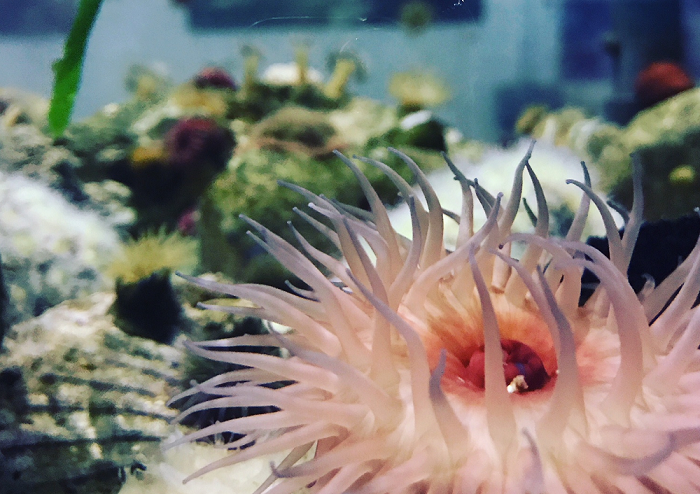
About Sea Anemone
Most famous for being the home of Pixar’s loveable clownfish, Nemo, Anemones can be found all around the world in a variety of different habitats and locations. But don’t let their plant-like looks fool you, they’re classified as sea animals in the invertebrate group. Sea anemones are in an animal family called Cnidarians and are also closely related to jellyfish and some types of coral. As invertebrates, they don’t have a backbone or any other bones, although they do have something else to protect them from predators.
They might look innocent, but don’t let them fool you. Like others in their animal family, they’ve developed a dangerous and unexpected trait – stinging tentacles. Armed with these, they can easily stun and capture their prey when it floats past totally unaware. A clever tool for the anemones, but not so great for any unknowing passers-by!
How to Identify
Anemones have colourful tentacles that closely resemble flowers, but there are a few different types to be aware of. From bright red strawberry anemones covered with green spots and often found hanging in low crevices to colourful dahlia anemones with banded tentacles, there’s a lot of variation depending on where they are in the world.
Nemo lives in a bubble tip anemone, which is one of the most common in aquariums!
More than 1,000 anemone species are known, and they can be almost any colour as well as ranging in size from just six inches to six feet.
Sea Anemone Life-Cycle
Sea anemones have a slightly more unusual reproductive cycle since they follow a process called broadcast spawning. During this, they send their sperm and eggs out into the water column in synchronised spawning events.
Once the eggs are fertilised, they develop into larvae and live as part of the zooplankton community at the bottom of the water until they develop into a polyp. This is when they begin to resemble what we know as sea anemone species.
Another interesting fact about sea anemones is that while the sexes are separate in some species, others are sequential hermaphrodites. This means that over the course of their lifetime, they can change sex. Many anemones are also capable of reproducing asexually, meaning they only need themselves to reproduce.
Sea Anemone Habitat
Most anemones are bottom dwelling, which is often referred to as living a benthic lifestyle. They also prefer a tropical climate, although some have adapted to live in colder waters. The majority of anemones will live within a coral reef.
Some species will tether themselves to soft sediment areas with a base to anchor them, while others float through the ocean. They’re a pretty diverse bunch!
Where to see Anemone at Bristol Aquarium
In our Rockpool at Bristol Aquarium, we have a range of anemone species including Dahlia, Strawberry, and Plumose anemones. See if you can spot all the different types and keep an eye out the next time you go to the beach to see if you can find any there!
Fun Facts: Anemones
Why don’t anemones sting clownfish?
The reason that Nemo can live happily in a sea anemone without being stung is that he has a symbiotic relationship, meaning they benefit from each other. protected by a layer of mucus making them immune. Not only this but anemones and clownfish also have a mutually beneficial relationship.
It’s quite obvious that sea anemone homes offer a nice layer of protection from predators for the brightly coloured clownfish, but what does the clownfish do for the anemone? Well, the anemones get nutrients from the waste produced by clownfish. Yummy.
Can you touch sea anemone?
The short answer is yes, humans can usually touch anemones without any issues. However, you might feel a bit of prickly sensation and burning as they try to sting your fingers. The longer you touch one, the worse the sensation will be, so it’s not recommended to touch them.
Did you know? Some people struggle to pronounce anemone.
Even Nemo couldn’t get it right, so don’t worry if you’re struggling too. It’s supposedly one of the hardest words to pronounce, and it’s definitely not one you’ll hear often. The correct way to say it is uh-neh-muh-nee. Try it out for yourself!
They have no eyes or ears.
Although they’re classed as animals, they don’t have many of the typical characteristics of an animal. They can’t see or hear their prey, so you might be wondering how they catch their prey. Their tubular bodies act as an entrance and exit for food which they scope out through sensation in the water. This sense is heightened to help them react quickly.
Plan your own visit to discover all the wonderful animals we have here at Bristol Aquarium!
Type
Invertebrates
What do they eat?
Plankton, krill
Size
1cm-1m
Water Type
Various
Where are we?
Across the World
